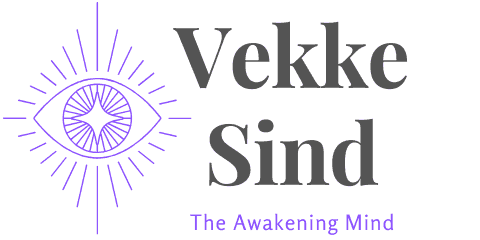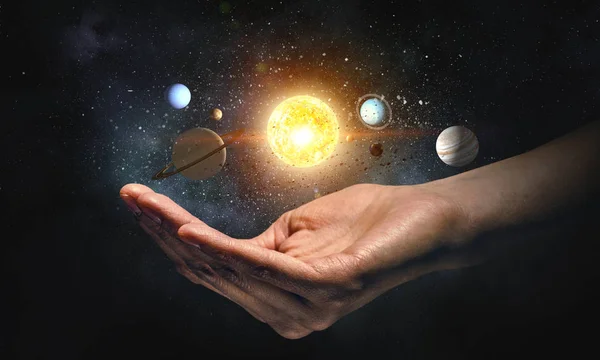Astrology has been a part of human history for centuries, with different cultures developing their own unique systems of interpreting the stars and planets. Three of the most well-known astrological traditions are the Western, Vedic, and Chinese zodiacs.
While all three systems share some similarities, they also have distinct differences that reflect the cultures from which they originated.
The Western zodiac is based on the tropical zodiac, which is centered around the position of the sun at the time of the spring equinox. It consists of 12 signs, each associated with a different time of year and set of personality traits.
In contrast, Vedic astrology uses the sidereal zodiac, which is based on the position of the stars. It also consists of 12 signs, but the dates associated with each sign are different from those in the Western zodiac.
Finally, the Chinese zodiac is based on a 12-year cycle, with each year associated with a different animal sign. Each animal sign is believed to have its own set of personality traits and characteristics that influence the fortunes of those born under it.
Table of Contents
Understanding Astrology

Astrology is the study of the movements and relative positions of celestial objects as a means of divining information about human affairs and terrestrial events. It is an ancient practice that has been around for thousands of years and is still widely used today.
Astrology is often regarded as a pseudoscience, as it lacks empirical evidence and is not accepted by the scientific community. However, many people still find value in astrology as a tool for self-discovery and personal growth.
Astrology is based on the idea that there is a connection between the movements of celestial bodies and events on Earth. This connection is thought to be influenced by the concept of karma, which is the idea that our actions in this life affect our future lives.
Astrology is also based on the belief that everything in nature is interconnected and that the movements of the cosmos have a direct impact on our lives.
There are several different types of astrology, including Western, Vedic, and Chinese astrology. Western astrology is based on the tropical zodiac, which is divided into 12 signs based on the position of the sun at the time of a person’s birth.
Vedic astrology, on the other hand, is based on the sidereal zodiac, which takes into account the position of the stars as well as the sun. Chinese astrology is based on a 12-year cycle of animals, with each year being associated with a different animal.
Astrology is often used as a tool for understanding one’s destiny and purpose in life. It can provide insight into a person’s strengths and weaknesses, as well as their natural talents and abilities.
Astrology can also be used to gain a better understanding of relationships, both romantic and platonic, and to make decisions about career and life paths.
While astrology is not a science, it can still be a valuable tool for self-discovery and personal growth. By understanding the movements of the cosmos and their impact on our lives, we can gain a deeper understanding of ourselves and the world around us.
Western Astrology
The Zodiac and Its Signs

Western astrology is based on the tropical zodiac, which divides the sky into twelve equal sections, each named after a constellation. These sections are known as the signs of the zodiac. The zodiac begins with Aries and ends with Pisces. Each sign is associated with certain personality traits and characteristics.
The signs of the zodiac are as follows:
- Aries
- Taurus
- Gemini
- Cancer
- Leo
- Virgo
- Libra
- Scorpio
- Sagittarius
- Capricorn
- Aquarius
- Pisces
Planets and Their Meanings
In addition to the signs of the zodiac, Western astrology also takes into account the planets and their positions at the time of a person’s birth. Each planet is associated with certain qualities and characteristics.
The planets and their meanings in Western astrology are as follows:
| Planet | Meaning |
| Sun | Self-expression, creativity, vitality |
| Moon | Emotions, intuition, nurturing |
| Mercury | Communication, intelligence, adaptability |
| Venus | Love, beauty, harmony |
| Mars | Energy, action, aggression |
| Jupiter | Expansion, growth, abundance |
| Saturn | Discipline, responsibility, limitations |
| Uranus | Innovation, originality, rebellion |
| Neptune | Dreams, spirituality, illusion |
| Pluto | Transformation, power, intensity |
The Sun and Moon in Western Astrology
The Sun and Moon are two of the most important celestial bodies in Western astrology. The Sun represents the self, while the Moon represents emotions and the subconscious.
A person’s Sun sign is determined by the position of the Sun at the time of their birth. This is the sign that most people are familiar with and is often used in horoscopes.
The Moon sign, on the other hand, is determined by the position of the Moon at the time of a person’s birth. This sign is said to reveal a person’s emotional nature and innermost desires.
Overall, Western astrology is a complex system that takes into account the positions of the planets and the signs of the zodiac to provide insight into a person’s personality and life path.
Vedic Astrology

Vedic Astrology, also known as Hindu Astrology or Jyotish, is an ancient system of astrology that originated in India. It is based on the sidereal zodiac, which takes into account the exact position of the planets within their signs.
Vedic Astrology is different from Western Astrology in terms of its calculations, methodology, and the use of nakshatras.
The Concept of Nakshatras
In Vedic Astrology, the zodiac is divided into 27 nakshatras or lunar mansions, each of which is associated with a different deity and has its own unique characteristics. These nakshatras are used to determine the position of the Moon in a person’s birth chart.
The nakshatras are also used to determine the auspicious timings for various activities such as marriage, starting a business, or buying a house.
Dasha System in Vedic Astrology
The Dasha system is a unique feature of Vedic Astrology that is used to predict the timing of events in a person’s life. It is based on the position of the Moon at the time of a person’s birth and the planetary periods that follow.
Each period is ruled by a different planet, and the length of each period varies depending on the position of the Moon at the time of birth.
Zodiac Signs in Vedic Astrology
The Vedic Zodiac consists of 12 signs, just like in Western Astrology. However, the dates of the signs are different, and they are based on the sidereal zodiac. The Vedic Zodiac is also divided into three groups of four signs each, known as the Gunas.
These Gunas are used to determine a person’s temperament and personality traits.
In conclusion, Vedic Astrology is an ancient system of astrology that originated in India. It is based on the sidereal zodiac, nakshatras, and the Dasha system.
The Vedic Zodiac consists of 12 signs, and each sign has its own unique characteristics and is associated with a different deity.
Chinese Zodiac

The Chinese Zodiac is a system of astrology that has been used in China for centuries. It is based on a twelve-year cycle, with each year being represented by a different animal. In addition to the twelve animals, there are also five elements that are associated with each animal.
The Chinese Zodiac is based on the lunar calendar, which means that the dates of the Chinese New Year and the beginning of each animal’s year can vary from year to year.
The Twelve Animals
The twelve animals of the Chinese Zodiac are the Rat, Ox, Tiger, Rabbit, Dragon, Snake, Horse, Goat, Monkey, Rooster, Dog, and Pig. Each animal is said to have certain personality traits and characteristics that are associated with it.
For example, people born in the Year of the Rat are said to be intelligent, charming, and quick-witted, while those born in the Year of the Ox are said to be patient, dependable, and hardworking.
The Five Elements
In addition to the twelve animals, there are also five elements that are associated with each animal in the Chinese Zodiac. These elements are Earth, Water, Fire, Wood, and Metal. Each element is said to have certain characteristics and qualities that are associated with it.
For example, people born in the Year of the Rat might be associated with the Water element, which is said to represent intelligence, flexibility, and adaptability.
Year, Month, and Hour in Chinese Zodiac
In Chinese astrology, the year of a person’s birth is just one factor that is used to determine their personality traits and characteristics.
The month and hour of their birth are also taken into account. The month of a person’s birth is said to represent their inner animal, while the hour of their birth is said to represent their secret animal.
Overall, the Chinese Zodiac is a complex system of astrology that has been used in China for centuries. It is based on a twelve-year cycle, with each year being represented by a different animal.
In addition to the twelve animals, there are also five elements that are associated with each animal. The Chinese Zodiac is based on the lunar calendar, and the dates of the Chinese New Year and the beginning of each animal’s year can vary from year to year.
Astrology Across Cultures
Similarities and Differences

While astrology is a practice that has been around for centuries, it has evolved differently in different cultures. Western astrology, Vedic astrology, and Chinese astrology are three of the most well-known and widely practiced astrological systems.
While they share some similarities, there are also significant differences between them.
One of the main differences between Western astrology and Vedic astrology is the zodiac system they use. Western astrology is based on the tropical zodiac, which is aligned with the seasons and the position of the sun.
Vedic astrology, on the other hand, uses the sidereal zodiac, which is aligned with the fixed stars. Chinese astrology, meanwhile, is based on a twelve-year cycle of animals, with each year being represented by a different animal.
Despite these differences, all three systems share the belief that the position of celestial bodies at the time of a person’s birth can have an impact on their personality, identity, and destiny. They also all use astrological charts and readings to interpret this impact.
Interpretations and Meanings
The interpretations and meanings of astrological signs and symbols can also vary between cultures. For example, in Western astrology, the sign of Aries is associated with the element of fire and is said to be passionate and impulsive.
In Vedic astrology, the sign of Aries is associated with the planet Mars and is said to be courageous and energetic. In Chinese astrology, the year of the Dragon is associated with power and good luck.
Another difference is in the way compatibility is determined. In Western astrology, compatibility is often based on the signs’ elemental compatibility (fire, earth, air, and water). In Vedic astrology, compatibility is based on the placement of the planets in each person’s chart.
In Chinese astrology, compatibility is based on the animals’ compatibility and the five elements (wood, fire, earth, metal, and water).
Overall, while there are similarities and differences between Western, Vedic, and Chinese astrology, they all share the belief that astrology can provide insight into a person’s spiritual and emotional identity and personality type.
They also all use astrological readings and charts to interpret this information, although the methods and interpretations may vary.
Astrology in History
Origins of Astrology

Astrology is an ancient practice that has been around for thousands of years. The practice of astrology is based on the belief that there is a connection between the positions of the celestial bodies and events that occur on Earth.
The origins of astrology can be traced back to ancient civilizations such as Mesopotamia, Egypt, and China.
In Mesopotamia, astrology was used to predict the movement of the stars and planets. The Babylonians were the first to develop a system of astrology based on the twelve zodiac signs.
The Greeks and Romans were also known to practice astrology, and they developed their own systems based on the Babylonian model.
The Egyptians were also known to practice astrology, and they developed their own system based on the movement of the stars and the seasons. The Egyptians believed that the stars were the souls of the gods and that they could be used to predict the future.
Astrology in Different Civilizations
Astrology has played a significant role in the history of many civilizations. In China, astrology was used to predict the future and to determine the best time for important events such as weddings and business deals.
The Chinese zodiac is based on a twelve-year cycle, with each year represented by an animal.
In Celtic culture, the druids used a system of astrology based on the cycles of the moon and the stars. The Celtic tree zodiac is based on the thirteen lunar cycles of the year, with each cycle represented by a different tree.
Astrology has also played a role in the mythology of many cultures. The Greeks and Romans believed that the gods lived in the heavens and that the movement of the stars and planets was a reflection of their actions.
The night sky was seen as a canvas on which the gods could paint their stories.
Overall, astrology has been an important part of human history for thousands of years. It has been used to predict the future, to understand the movements of the heavens, and to connect with the gods. While the practice of astrology has evolved over time, its basic principles have remained the same.
Astrology Today

Astrology remains a popular topic of discussion and interest in many cultures today. With the widespread availability of horoscopes through various media outlets, people can easily access information about their zodiac signs and what the future holds for them.
One interesting phenomenon in astrology is the case of twins. Despite being born at the same time and location, twins can have different zodiac signs depending on the exact moment of their birth.
This highlights the importance of the solar calendar in astrology, which is based on the position of the sun in relation to the Earth.
In Western astrology, the zodiac signs are based on the seasons and are aligned with the tropical zodiac. Meanwhile, Vedic astrology uses a sidereal zodiac, which is based on the exact location of the planets within their signs.
Chinese astrology, on the other hand, is based on the lunar calendar and uses a 12-year cycle of animal signs.
While there are differences in how astrology is practiced across cultures, there are also similarities. For example, all three systems use the concept of zodiac signs to divide the sky into 12 sections.
Each sign is associated with certain personality traits and characteristics, which can provide insight into an individual’s life.
Overall, astrology continues to be a fascinating subject for many people around the world. Whether it is used for guidance or simply for entertainment, astrology remains a part of our cultural landscape.



